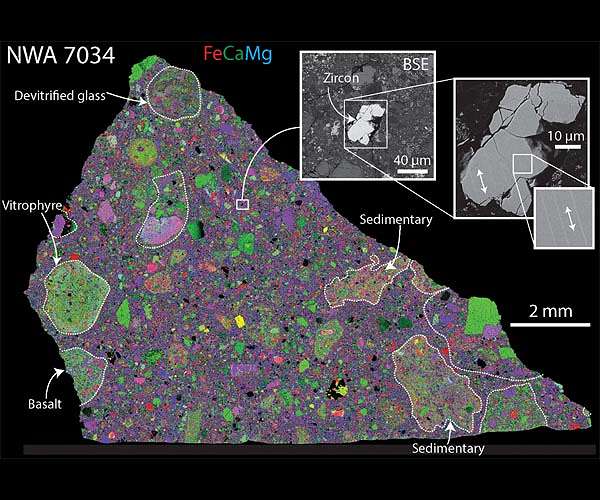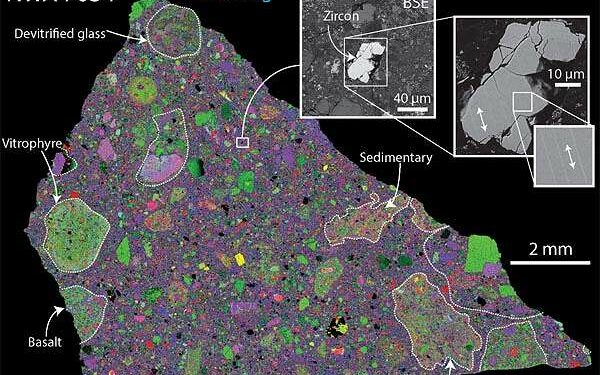
Martian Meteorite Impacts Provide a ‘Cosmic Clock’ for Planetary Dating
by Sophie Jenkins
London, UK (SPX) Jul 01, 2024
Seismic signals indicate that Mars is hit by approximately 300 basketball-sized meteorites annually, offering a new method for dating planetary surfaces.
New research led by scientists at Imperial College London and ETH Zurich, as part of NASA’s InSight mission, reveals the frequency of ‘marsquakes’ caused by meteorite impacts on Mars. The study found that Mars experiences between 280 and 360 meteorite impacts each year, creating craters over eight meters in diameter and shaking the planet’s surface.
The marsquake rate, detected by InSight’s seismometer – an instrument that measures minute ground movements – surpasses previous estimates derived from satellite imagery. This seismic data provides a more direct measurement of meteorite impact rates, potentially aiding in the accurate dating of planetary surfaces across the Solar System.
Dr. Natalia Wojcicka, co-first author and Research Associate at Imperial College London’s Department of Earth Science and Engineering, explained: “By using seismic data to better understand how often meteorites hit Mars and how these impacts change its surface, we can start piecing together a timeline of the red planet’s geological history and evolution. You could think of it as a sort of ‘cosmic clock’ to help us date Martian surfaces, and maybe, further down the line, other planets in the Solar System.”
Impact Craters as Cosmic Clocks
Scientists have long used the number of craters on Mars and other planetary surfaces as ‘cosmic clocks’ to estimate their age. Older surfaces have more craters than younger ones. Traditionally, models based on lunar craters predict meteorite impact rates over time, adjusted for Mars’s atmosphere and its position in the Solar System. However, observed small craters (less than 60 meters wide) on Mars are fewer than expected.
This research, part of the InSight mission to understand Mars’s seismic activity and internal structure, identified a new pattern of seismic signals from meteorite impacts. These ‘very high-frequency’ marsquakes were characterized by a greater proportion of high-frequency waves compared to typical seismic signals.
The study found that the meteoroid impact rate is higher than previously estimated, challenging existing models based on lunar data and satellite imagery. This emphasizes the need for improved models to understand crater formation and meteorite impacts on Mars.
The Power of Seismic Data
To address these discrepancies, the research team used NASA’s InSight lander and its sensitive seismometer, SEIS, to record seismic events likely caused by meteorite impacts. SEIS detected seismic signatures typical of these high-frequency marsquakes, differing from other seismic activities.
Using this method, the researchers identified more impact events than satellite imaging had predicted, especially for smaller impacts creating craters only a few meters across.
Professor Gareth Collins of Imperial College London’s Department of Earth Science and Engineering commented: “The SEIS instrument has proven to be incredibly successful at detecting impacts – listening for impacts seems to be more effective than looking for them if we want to understand how often they occur.”
Enhancing Solar System Understanding
Researchers suggest that deploying smaller, cost-effective seismometers on future missions could enhance knowledge of Mars’s impact rates and internal structure. These instruments would detect more seismic signals, providing a comprehensive dataset on meteorite impacts and planetary structures.
Dr. Wojcicka added: “To understand the inner structure of planets, we use seismology. This is because as seismic waves travel through or reflect off material in planets’ crust, mantle, and core, they change. By studying these changes, seismologists can determine what these layers are made of and how deep they are. On Earth, you can more easily understand the inner structure of our planet by looking at data from seismometers placed all around the globe. However, on Mars there has been only one – SEIS. To better understand Mars’ inner structure, we need more seismometers distributed across the planet.”
Besides the research published in Nature Astronomy, the team also participated in a concurrent study in Science Advances, using images and atmospheric signals from InSight to estimate Mars’s impact frequency. Both studies reached similar conclusions, reinforcing the findings.
Research Report:A new estimate of the impact rate on Mars from Very High Frequency marsquake statistics
Related Links
Imperial College London
Mars News and Information at MarsDaily.com
Lunar Dreams and more
